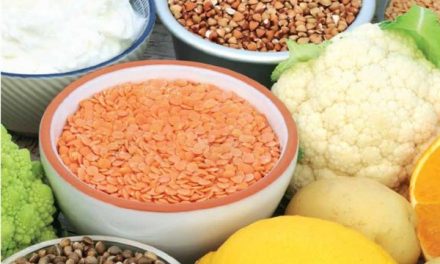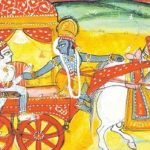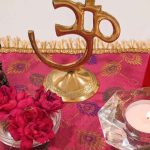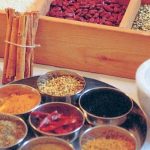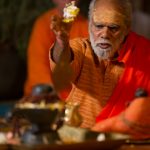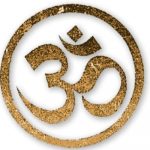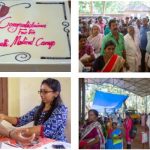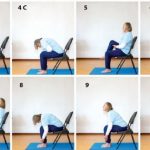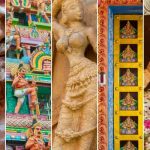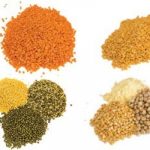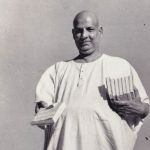 PERFECT HEALTH THROUGH AYURVEDA
PERFECT HEALTH THROUGH AYURVEDA
BY DR. SUDHINDRA UPPOOR
Excerpts from a lecture given by Dr. Sudhindra Uppoor during the Sivananda Teachers’ Training Course in Rudraprayag, India, 22 October 2019.
Let us learn the basics of Ayurveda. You will learn a lot about your body. You will learn where, exactly, you stand in terms of your body constitution, your vitality and your Ojas.
The whole concept of Ayurveda evolves around the Pancha Mahaboot, the five macro-elements. What are the five macro- elements? What is there in the universe? Up above is space. This is the first macro- element.
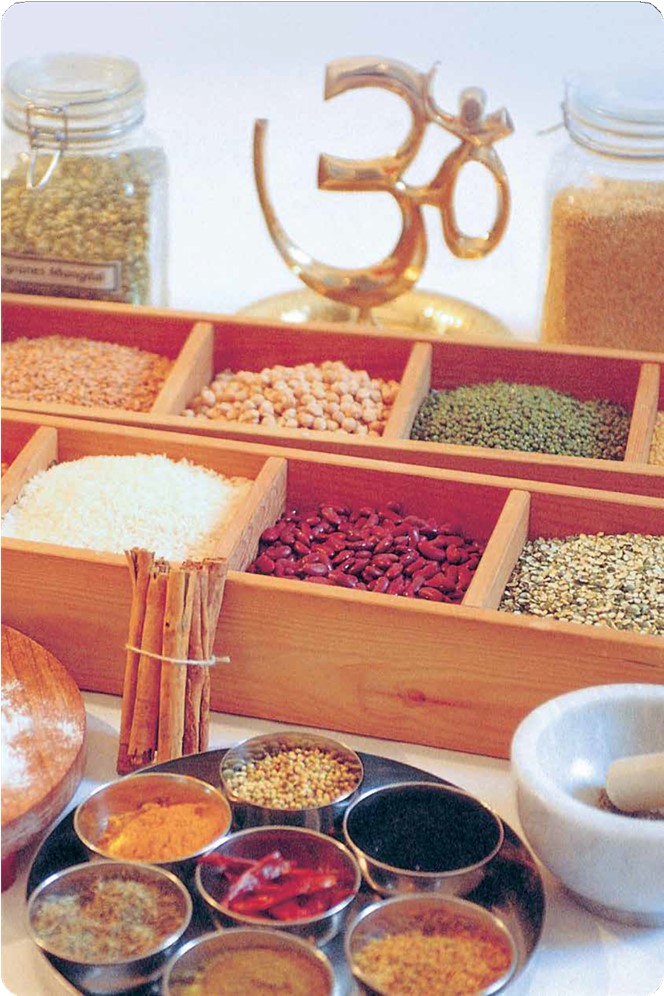 The second is air, the third is fire, the fourth is water and the fifth is earth. These elements should always be in the same order as in the universe. Space, air, fire, water and earth.
The second is air, the third is fire, the fourth is water and the fifth is earth. These elements should always be in the same order as in the universe. Space, air, fire, water and earth.
Fire has an upward direction and water a downward direction, hence this order. The fundamental concept of Ayurveda is that this body you have, is a mini universe in itself.
The five elements in that specific order, reflecting how they exist, is very important. And your body is a mini universe.
The area of the neck and head is in line with the first element, space, this is the cosmic energy. The important organs here are the brain, the sense organs like the eyes, nose, tongue, ears, the skin and the thyroid gland. Second in the universe was air. Our two lungs and the heart are the ‘air’ organs. The area of the lungs and the heart is the air belt.
Third in the universe is fire. Down there you have your liver, your gallbladder, your pancreas and stomach. In yoga terms, you call it the solar plexus. These solar plexus energies are the fire energies. These are your cooking energies, it is your kitchen. The fire cooks the food.
The fourth energy is water. You have your kidneys, your ureter, your urine bladder and your urine coming out. This is the water energy.
The Fifth in the universe is earth. The reproductive energies, the lower energies, are the earth energies. Why do we call this the earth energy? When you have a seed in your hand, you put it in the earth for reproduction. That is why this area in your body is the earth area. To produce new crops, new agriculture, you need the soil.
Five elements in the body. This is the engine of the car and the four tyres of the car are your four limbs, two hands and two legs.
These are just there to move the engine. The five elements in the universe are directly linked to the five elements in your body.
You will probably have heard of the terms Vata, Pitta, Kapha. Let’s repeat the five elements: Space – air; fire – water – earth. Space + air = Vata. Fire + water = Pitta.
Fire burns and water cools it down. How can these two live together? In what form can they live together? As acid, liquid acid. The liquid fire in your body is Pitta: the hydrochloric acid, the urine, the salty tears. The third one is Kapha. Water + earth = Kapha. Water is mentioned twice. Why is that? Space + air = Vata. Fire + water = Pitta. Water + earth = Kapha.
We have to go back to the fundamentals. Our body is a mini universe. How many types of water are there in the universe? Seawater and the drinking water – two types. The seawater – salty water and acid water – belongs to Pitta. And the alkaline water in the body belongs to Kapha. That’s why water is included twice. The alkaline water is the saliva, the juices and soft mucus within the body. When this alkaline water mixes with earth, this is Kapha. When the acidic water mixes with fire, this is pitta.
We can see them as belts: air and space, is the Vata belt, the tummy belt is the Pitta belt and the kidneys and the reproductive area is the Kapha belt.
The three doshas Vata, Pitta, Kapha present the activities occurring within your body.
Now let us study the definition of ‘health’ within Ayurveda. It is very important to understand what health is. The World Health Organisation has listened to various definitions of health, the Western, the Ayurvedic, the homeopathic… and finally concluded that the definition of health is the Ayurvedic one, which it has approved.
To understand the definition of health according to Ayurveda, we should first learn a few key Ayurvedic terms: (i) Dosha, (ii) Dhatu, (iii) Agni, (iv) Mala and (v) Rasa. We will study these in order to understand the basic principles of Ayurveda. We have already studied the Doshas: Vata, Pitta, Kapha. The second term is Dhatu. Sapta Dhatu = seven tissues. Your body has seven tissues. The first tissue is the lymphatic system. The second is the circulatory system. The third is the muscular system.
The fourth is the fatty tissue. The fifth is the bone (skeletal) system. The sixth is the bone marrow (nervous system). The seventh system is the hormonal system, oestrogen in women and testosterone in men.
 These seven tissues in the body are very important in learning about Ayurveda. The Sanskrit names are: Rasa, Rakta, Mamsa, Meda, Asthi, Majja, Shukra. In English: lymph, blood, muscle, fat, bone, bone marrow, hormones.
These seven tissues in the body are very important in learning about Ayurveda. The Sanskrit names are: Rasa, Rakta, Mamsa, Meda, Asthi, Majja, Shukra. In English: lymph, blood, muscle, fat, bone, bone marrow, hormones.
I will introduce a new term, Ojas. Why is it so important to learn about Ojas? Your ultimate aim in learning yoga, chanting the Sanskrit mantras and listening to spiritual teachings is to improve your vital energy or Ojas. This is the ultimate vital energy in your body. Where does this Ojas come from?
The base chakra is the muladhara chakra, the root. The next chakra, going up your body, is the svadhisthana chakra, the adrenaline plexus. Then the manipura chakra, the solar plexus. The next one is the anahata chakra, your heart plexus. The next is the thyroid plexus, the visuddha chakra. Then comes the ajna chakra, the command plexus, the pineal gland, which has to open up with your yoga practice.
What is the meaning of mula? It is root. If your muladhara chakra is strong, and only then, your whole body is ultimately strong. What is the muladhara chakra? Remember the seventh tissue, the hormones? The bottom line here is very simple; unless and until you have good hormonal energy, there is no ultimate vitality in your body. It is all about how you use your hormones. You want to use them only for sexual gains? Or for nourishing your energy and uplifting your chakras?
It is up to you. Bring up the hormonal energy to nourish your svadhisthana chakra, the adrenaline plexus. Then bring it up to manipura chakra, the solar plexus and then by practice to anahata chakra, the heart chakra and the visuddha chakra, the thyroid plexus. Then the nourishment begins and your face starts to glow. You can see man and women with a six-pack looking good, but there is no glow in their faces.
You bring hormonal energy to nourish your Ojas, your vital energy. So, testosterone, progesterone and oestrogen have the ultimate responsibility. The ultimate energy comes from there. It is all about how you utilise it, in your yogic karma or to keep a physically healthy body. This is called the ultimate vitality – after the seven tissues are nourished, you use the testosterone, oestrogen and progesterone to get Ojas into your body.
Yogis with high Ojas do not even eat food. Swallowing just a drop of Ojas, the ultimate nectar, they don’t need food. One yogi was observed in a hospital with cameras all around him and he stayed there for three months without any food, just sitting in meditation and taking a drop of nectar called Ojas. He was not weak or sick, but vital and active. To attain the Ojas in your body, you need to maintain your vitally, maintain the vital seven tissues in your body.
Now the next topic is Agni. What is the meaning of Agni? Fire! I will define Agni in one sentence: You are what your digestive fire is. It is as simple as that. If you have good digestion, a good appetite, no gas in your stomach, if you don’t get constipated, if you don’t have acidity all the time, that means you are healthy. You will never get any diseases. All the diseases originate from the gut. You are what your gut is. Always keep your digestive fire active.
What is Mala? It is the excretion of the body. There are three excretions or Malas: urine, faeces and sweat. If somebody does not sweat, it is a big problem. If someone does not go to the loo, it is a big problem. If someone does not have good urination, your kidneys will be damaged. These are the three malas, the three excretions.
The next topic is Rasa. What is Rasa? It is taste. How many tastes are there?
Six: sweet, salt, sour, spicy, bitter and astringent.
What is astringent? What is the taste of black coffee? What is the taste of pure honey, the aftertaste? This is astringent, not sweet. It leaves an aftertaste in your mouth. Black coffee, honey, green tea, yoghurt, salad leaves are astringent tastes. You will come to learn why the six tastes are so important when you apply this to yourself.
Now that we explained all these keywords, we can return to the definition of health in Ayurveda. A very important word is Sama. Sama means the balanced, middle path.
Do not do anything extreme in your life. Eat good food, wear good clothes, practice a good lifestyle. Yoga is an example. Is doing yoga for 12-15 hours a day good for you?
No way. Is sleeping for 12 hours good for you? No way. Everything follows a balanced, middle path.
Now we are ready to understand the definition of health through understanding the meaning of Sama. The definition of health in Sanskrit is: sama dosha, sama dhatu, sama agni, mala kriya. The doshas, Vata, Pitta, Kapha should be ‘in sama’, balanced. Sama dhatu: the seven dhatus should be in sama. Mala kriya: good excretions, good sweat, tears, urination. Sama agni: good digestive fire. When these are in sama, then health is fine, even the Western science agrees. What makes the Ayurvedic definition of health unique? In Sanskrit: Prasanna atma indriya manaha swastha iti abhideyate – prasana means happy.
Prasana atma means happy soul. Prasana indriya means happy sense organs, listen well, talk well, see well. Manaha means happy mind. Only then are you considered healthy. Not only are your doshas sama, but your dhatus are sama, your mala kriya is good and you have a good agni. But until and unless you have a happy soul, happy mind, happy senses, you are never considered healthy. That’s why yoga is so important. Mantra chanting is important as well as giving and being loving and compassionate towards others. You need to have good, happy senses and a good, happy soul, instead of a six-pack body, to be considered healthy. This definition is approved by the World Health Organisation.
Only consider yourself very healthy when you are very cheerful. Apart from being very flexible, having a good body – be happy.
Only then, can you consider yourself to be at your healthiest.
So far, this has been about the theory of Ayurveda. From now on, it is about applying Ayurveda to yourself. To do this, you have to know your body type. Two Sanskrit words apply here: Prakriti and Vikriti. Prakriti means the body constitution you are born with. Vikriti means your body disbalance.
Ayurveda classifies seven prakriti, or types of body constitution.
The first one is Vata body constitution. The second is Pitta body constitution. The third is Kapha body constitution. The fourth is VP, Vata-Pitta. The fifth is VK, Vata-Kapha. The sixth is PK, Pitta-Kapha. The seventh is VPK, Vata-Pitta-Kapha, all three together. These are the seven personalities, and you will correlate in one of them.
Vata constitution
Vata persons are thin, lean, either too tall or too short and they are always on the run. You ask them so sit at one place and listen, but no, no, they are always moving around – restless personalities. They have thin facial features, a small face, small eyes, a small forehead and they are always talking, you cannot hold them still for long. The digestive system of this personality is ‘you never know what is coming tomorrow’.
Constipation, diarrhoea, defecation four times today, tomorrow nothing, gas today, good appetite tomorrow, an unpredictable digestive system. These people usually have certain types of fearfulness. ‘Should I go to Rudraprayag?’ ‘Might there be an earthquake there’?
There is always some fear that holds them back. This is the typical Vata Prakriti. Thin, lean, talkative, not sleeping well, dreaming a lot, and the dreams are fear-centric.
Pitta constitution
These are the moderately built people, the medium build personalities. Medium height, medium weight, medium build. Soft, silky, wavy hair, sharp facial features, sharp nose, sharp penetrating eyes. Good digestive fire, until they are subjected to stress – then their digestive system goes wrong. And very clearly no constipation whatsoever.
The mind of Pitta is disciplined, punctual, structured, and work-centered. But every Dosha is equal, no Dosha, no Prakriti, no body constitution is ever superior, no body constitution is inferior. The minus point of the pitta personality is egocentricity, it is always me, me, me and myself. They put ”me” first, ‘it is my money’, if there is an earthquake, they jump first, not bothering about other people or the friend next to him. This is the Pitta personality.
The best way to remember the difference between Pitta and Vata is by using animal analogies. The Vata personality is a deer. They are always fearful, worried that a tiger will attack them, they are always on the move, and there is always some anxiety. The Pitta personality is a cat. You see the plus points of the cat, it keeps itself clean and neat, is professional, there is no problem.
You leave the cat and come to Rudraprayag and the cat takes care of itself back home, they know what to do. But if the cat does not like you and you try to hold it, what happens? It will scratch you and run away. This is typical Pitta personality.
Kapha constitution
The Vatas are thin, the Pittas are medium build. The big ones are the Kapha personalities. Never, ever confuse this with obesity. Obesity is a disease. But the
Kaphas are the well-built, big people. Broad shoulders, big, good looking – this is your Kapha type. Well built, not fat and with a big personality. Kapha personalities have heavy, good, fine hair, big facial features, big face, big eyes, big ears. It is so strange that when you come across them in your life, they are always so big, so heavy, but they eat so little.
They have a digestive system that is sensitive. Many go to the loo twice. The have soft motions and do not absorb vitamins well into the body. They are very stable in the mind. They know what they want to do, they do not lose their temper, or get angry or irritable. Pitta gets irritable. Kapha does not get irritable. But as we said, every Dosha has plus and minus points. The minus point of the Kapha personality is that they can be very lazy. Slow. Tomorrow. No interest. Sleep. They cannot be professional. They are the best people to go on holiday with, but not to work with. This is the typical Kapha personality.
So now, animal-wise, an example of the Kapha personality is the domestic Indian bull. You honk, honk, honk, on the road, but he is not bothered to move. Their behaviour is slow, relaxed, no problem, happy, not losing their temper. This is the typical Kapha personality.
If you have visited some temples in India, you will have seen pieces of art with the head of a tiger, the body of a deer and tail of a crocodile. What is this? This indicates a mixture of personalities. The personalities number four, five and six are mixtures. Now the seventh has all three, Vata-Pitta-Kapha. When you do yoga, when you do Sadhana, when you do spirituality, when your Ojas is at your ultimate best, you have Vata, Pitta and Kapha, all three together in balance.
The ultimate aim of yoga, of Ayurveda, of everything, is to get this balance. VPK, all three together in balance. When these are in disbalance, this is the moment when you will die. But if they are in balance, this is ultimate health and ultimate vitality.
So these are the seven personalities. The deer, the cat, the bull, the mixtures and all three together.
What is the advantage of knowing your body constitution? When you know what your Prakriti and Vikriti are, your whole diet and lifestyle revolves around this. Not all people, according to Ayurveda, can eat the same food. With sixty people, there are sixty different diets. For example, universally, as you can see on social media, cider vinegar is said to be beneficial but it does not suit everyone. Every personality is different. So, avoid intermittent fasting and do not ever do any type of diet like unless you know what your body constitution is, what your Prakriti and your Vikriti are. Then you will know what foods are good for you, what foods are bad for you and what foods are neutral or average for you. This is where the body constitution helps, so, know your Prakriti and your Vikriti too, your body constitution and your body disbalance.
Dr Sudhindra Uppoor did his postgraduate studies in Ayurveda at the Gujarad Ayurveda University. He comes from a family of Ayurvedic doctors and specialises in pulse diagnosis or nadi pariksha and jiva pariksha, tongue diagnosis, as well as the body detox program. He practices in Goa, India.

